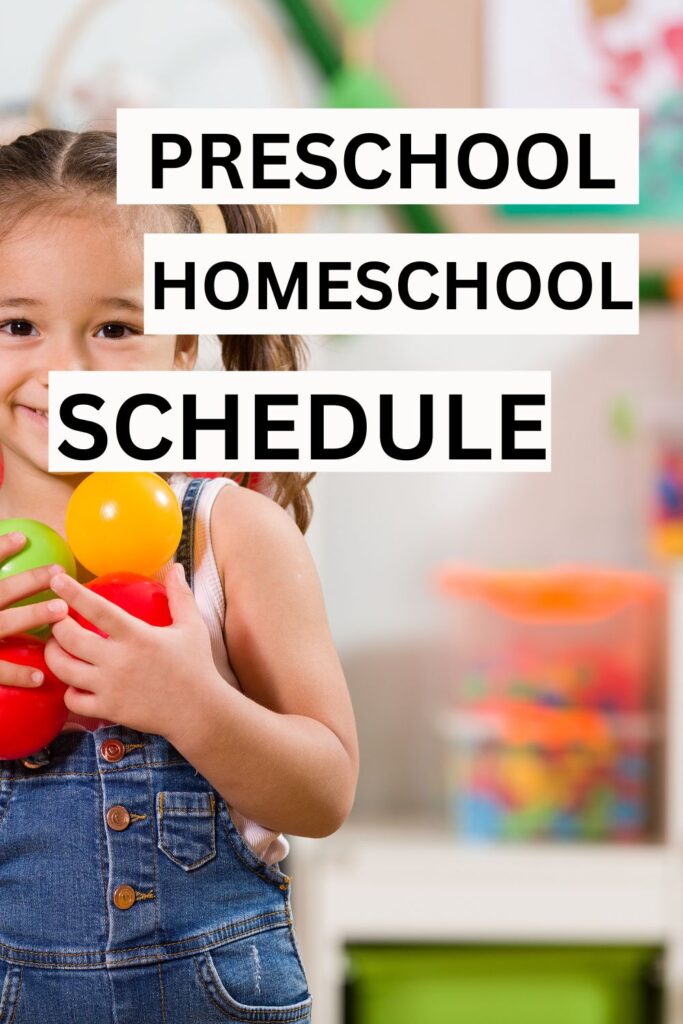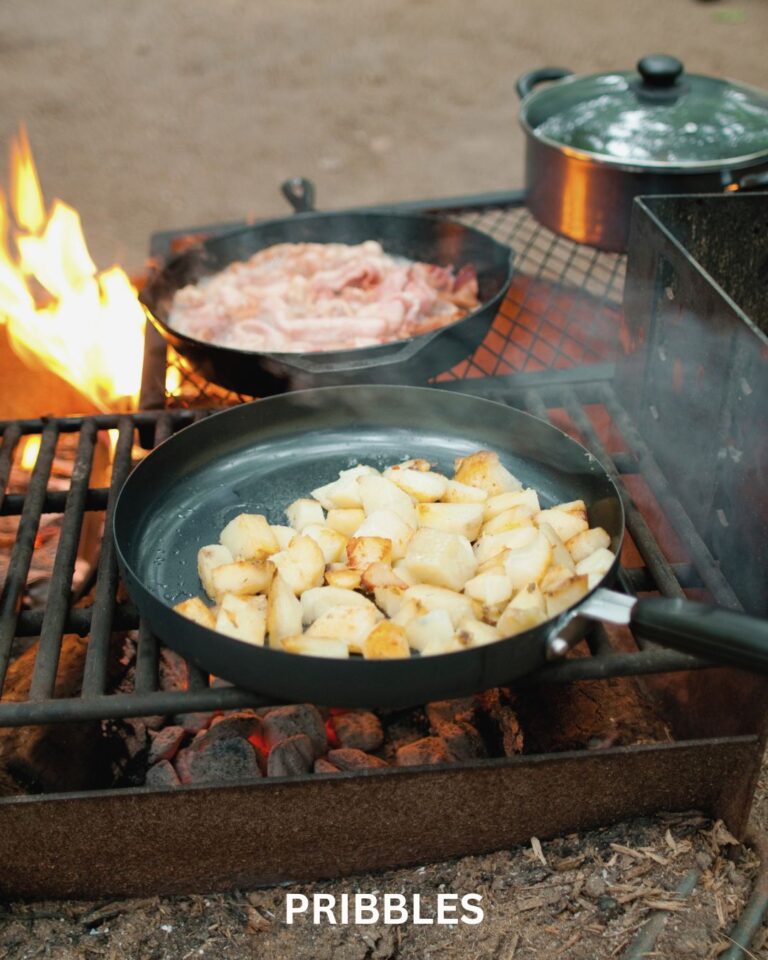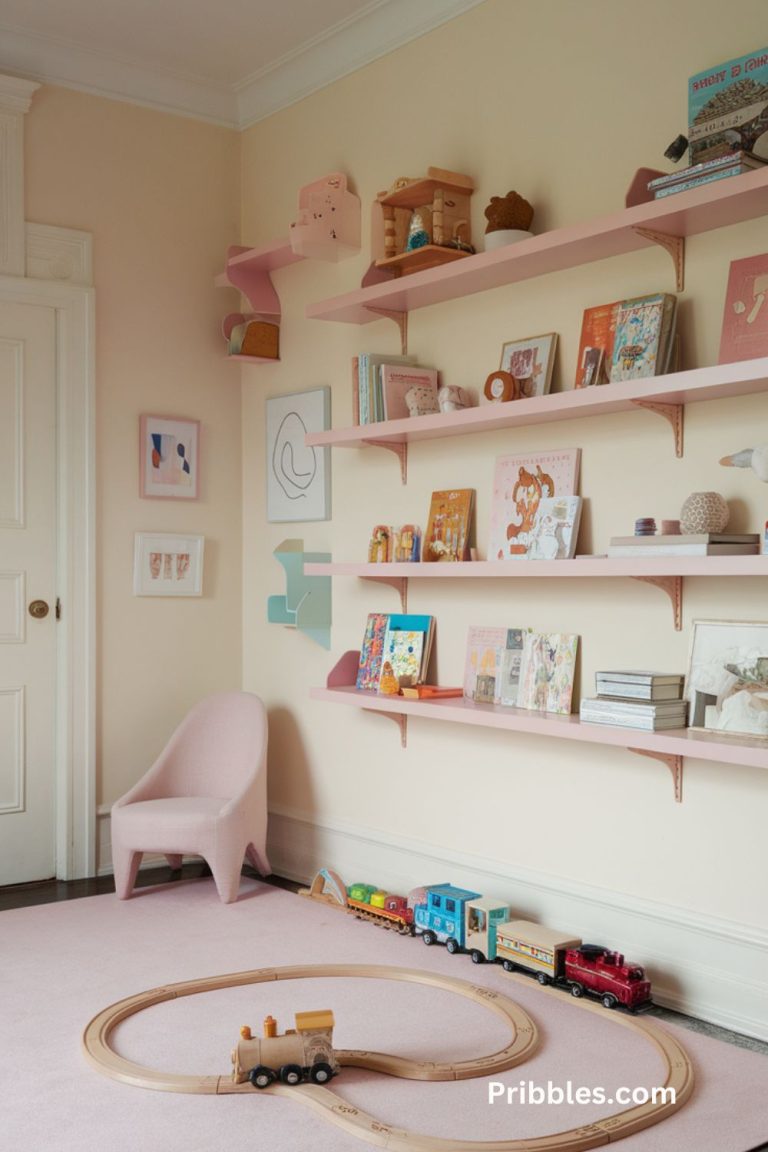How to Create a Preschool Homeschool Schedule That Flows
Homeschooling preschoolers can feel like a wild mix of joy, chaos, and endless snack breaks — and if you’re anything like me, you’ve probably wondered how in the world to fit learning, playtime, and laundry into one day.
The good news?
You don’t need a rigid, hour-by-hour plan to make your homeschool days run smoothly. What you need is a schedule that flows — one that fits your family’s natural rhythm, keeps little ones engaged, and gives you breathing room, too.
Whether you’re brand new to homeschooling or simply looking to bring more calm into your preschooler’s days, I’m sharing exactly how to build a preschool homeschool schedule that works in real life. No fancy charts required (unless you love a good chart — then by all means, go for it!). Let’s dive in.
More to read:
- Homeschool Room Ideas: From Cozy Corners to Full Classrooms
- Cozy Homeschool Room Ideas to Inspire Your Space
- Virtual Field Trips: Ideas and Webcam Sites for Homeschoolers
Save for later on Pinterest
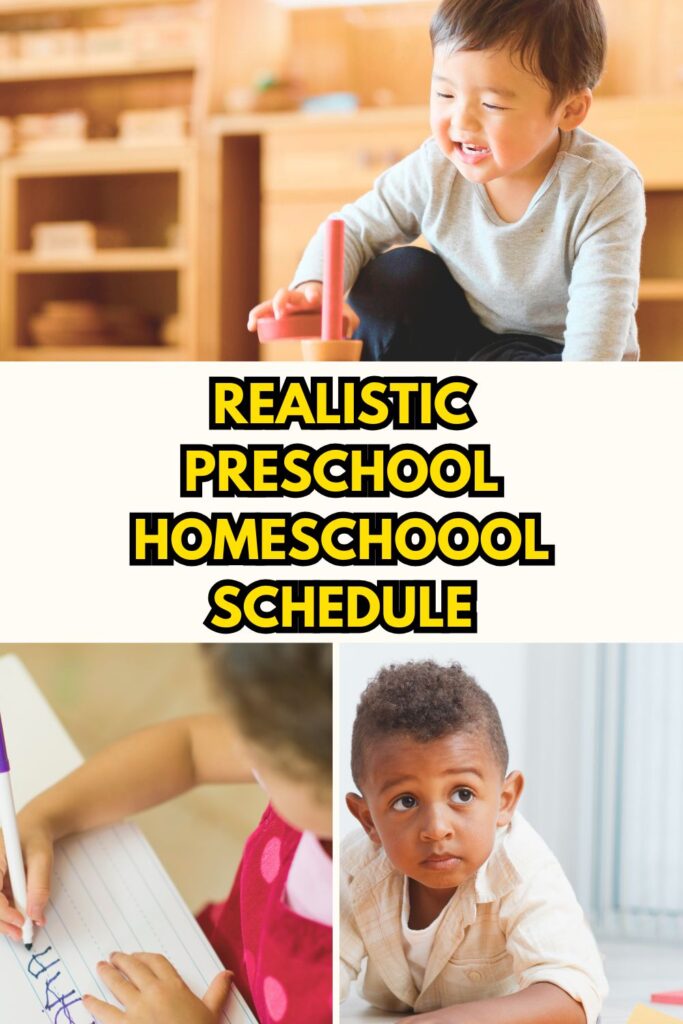
Affiliate links may be used in this post and if so I will receive a commission at no extra cost. I’m also part of the Amazon Affiliate (Associate) program where I earn a commission from sales made through my affiliate links. Read the full disclosure policy.
Preschool Homeschool Schedule
Before we dive into the practical steps, I want you to take a deep breath and let go of the idea that your homeschool day has to look “perfect.” The beauty of homeschooling preschool is that you get to shape the rhythm of your days in a way that fits your family.
It’s less about strict schedules and more about creating a flow that feels calm, joyful, and doable. The tips below will help you build a preschool homeschool schedule that keeps little ones engaged while giving you the flexibility and breathing room you need, too. Let’s get started!
1. Start with Your Family’s Natural Rhythm
Before you even think about creating a schedule, take a few days to observe your family’s natural flow. When does your child naturally wake up? When are they the most focused and happy? When do you tend to need quiet time or a reset?
Preschoolers thrive on predictability, but that doesn’t mean every family’s day looks the same. Some families love slow mornings with pancakes and storytime before diving into activities. Others function best when they knock out their main “learning time” early in the day.
👉 Extra Tip: Keep a notepad handy for a few days and jot down what happens when. You’ll start to see patterns emerge — like mid-morning bursts of energy or post-lunch crankiness — and those will be your anchors for building a schedule that feels natural instead of forced.

2. Anchor Your Day with Routines, Not Strict Timetables
The biggest mistake I see homeschooling parents make (and yes, I’ve done it too!) is trying to stick to a super rigid timetable, like a traditional classroom. But preschool at home doesn’t have to mimic school. In fact, it shouldn’t.
Instead of assigning exact times to each activity, think in blocks or rhythms:
- Morning routine → breakfast, get dressed, morning basket or storytime
- Learning/play block → structured activities like letters, numbers, crafts
- Outdoor time → backyard play, nature walks, playground adventures
- Quiet time → naps, independent play, or calm reading
- Afternoon rhythm → free play, art, baking, errands, or family activities
This approach creates predictable touchpoints throughout the day without making you feel like a clock is breathing down your neck. If something takes longer (or shorter) than expected, no stress — you just flow to the next part of your rhythm.
3. Keep “Learning Time” Short and Sweet
Preschoolers have short attention spans — think 5 to 15 minutes per activity depending on their age and personality. Instead of long, formal lessons, aim for bite-sized learning sessions sprinkled throughout the day.
Some families like a set “school time” in the morning for focused activities like:
- Letter or number recognition games
- Tracing, playdough letters, or simple worksheets
- Hands-on math with counting bears or snacks (yes, Goldfish crackers count!)
- Arts and crafts tied to a weekly theme
- Read-aloud time (picture books or short chapter stories)
Others prefer to weave learning into everyday activities — counting spoons while setting the table, identifying colors on a walk, or singing the alphabet while brushing teeth. Both approaches are valid! Pick what feels joyful and realistic for your family.
👉 Extra Tip: End learning activities before your child starts melting down. Ending on a good note makes tomorrow’s “school time” easier and more fun.
4. Prioritize Outdoor Time Every Day
If there’s one thing that helps preschool homeschool days flow better, it’s getting outside — rain or shine. Fresh air is magical for little ones (and for us grownups, too). It burns off extra energy, resets moods, and naturally supports sensory and physical development.
Try to build at least one dedicated outdoor block into your day. It could be:
- Morning backyard play while you sip coffee ☕
- A mid-day walk to break up learning time
- An after-nap playground trip
- Gardening, nature scavenger hunts, or chalk art in the driveway
Outdoor time doesn’t have to be complicated. Even 15–30 minutes can make a huge difference in how the rest of your schedule flows.

5. Add a Quiet Time Block (Even If Your Child Doesn’t Nap)
Many preschoolers have outgrown naps but still need downtime during the day — and honestly, so do parents. A quiet time block gives everyone a break to recharge.
Quiet time might look like:
- Listening to audiobooks or soft music
- Flipping through picture books
- Building with blocks or playing independently in their room
- Doing puzzles, sticker books, or calm sensory bins
This mid-day pause helps prevent afternoon meltdowns and gives you a moment to tidy up, answer emails, or simply sit in silence (bliss!).
👉 Extra Tip: Set clear quiet time expectations — show your child which activities are “quiet time” approved, use a timer, and stick with it consistently. Many parents find 30–45 minutes works beautifully.
6. Choose a Weekly Theme to Guide Your Activities
One way to make your preschool homeschool schedule feel cohesive (and less overwhelming!) is to pick a weekly theme. This gives you a fun focal point for activities, books, and conversations.
For example:
- Farm Week → read barnyard books, visit a local farm, do a tractor craft, count farm animals
- Ocean Week → sing ocean songs, learn about sea creatures, do water play, create fish art
- Community Helpers → read about firefighters and doctors, do dress-up play, make thank-you cards
Themes help you stay organized and make planning simpler — plus, kids love the repetition and immersion. You can sprinkle themed activities throughout your daily rhythm without needing to reinvent the wheel every day.
7. Keep It Play-Based and Hands-On
Preschool homeschool schedules flow best when they’re built around play. At this age, play is learning — and it’s how children make sense of the world.
Mix up your days with:
- Sensory play: water tables, rice bins, slime, sand, or nature trays
- Creative play: building, pretend play, dress-up, storytelling
- Art and crafts: painting, cutting, gluing, collaging
- Movement: dance parties, yoga, obstacle courses, indoor “recess” on rainy days
Play gives your schedule flexibility, keeps kids engaged, and makes learning feel fun and natural.
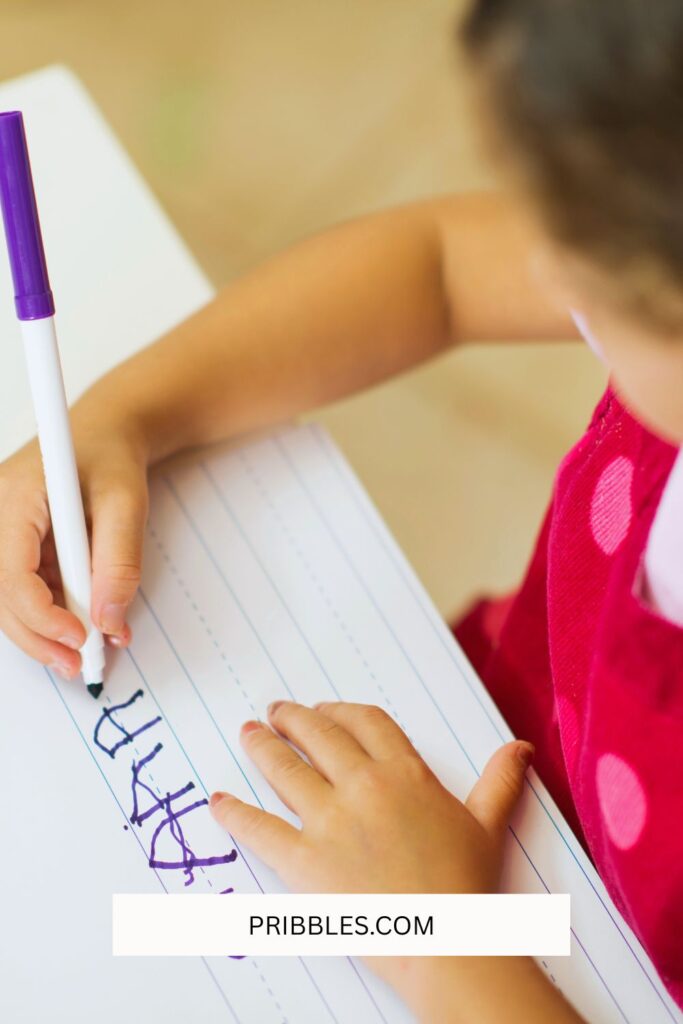
8. Sample Preschool Homeschool Schedule (Flexible Flow)
Here’s an example of what a realistic daily rhythm might look like — feel free to tweak it for your family:
8:00 AM – Morning Routine
Breakfast, get dressed, morning basket (songs, stories, calendar)
9:00 AM – Learning & Play Block
Letter games, themed craft, sensory bin, hands-on math
10:30 AM – Outdoor Time
Backyard play, neighborhood walk, or playground trip
11:30 AM – Lunch + Read-Aloud
Casual read-aloud during or after lunch
12:30 PM – Quiet Time
Independent play, puzzles, audiobooks, or nap
2:00 PM – Free Play / Afternoon Rhythm
Baking, errands, imaginative play, art, or nature activity
4:00 PM – Outdoor Reset
Bike ride, sandbox, or simple outdoor fun
5:00 PM – Tidy Up + Evening Routine
Quick cleanup together, dinner, bath, bedtime stories
Notice how it’s not tied to exact times — instead, it follows a gentle rhythm that ebbs and flows with your child’s energy.
9. Allow Room for Flexibility and “Off” Days
Even the best preschool homeschool schedule will have off days. Someone wakes up grumpy, errands run long, a craft turns into a glitter explosion… you know the drill. 😅
Instead of stressing, build flexibility into your mindset:
- Keep a few low-prep activities ready for days when you need a lighter load
- Swap outdoor time for extra indoor play if the weather doesn’t cooperate
- Say yes to spontaneous field trips or pajama days — they count as learning, too!
Remember, homeschooling preschool is about connection, exploration, and joy, not checking every box on a list.
10. Involve Your Child in the Schedule
Finally, don’t forget to involve your preschooler in creating the flow of their day. Give them small choices:
- “Would you like to do playdough or puzzles first?”
- “Should we go for a walk or play in the yard?”
- “Do you want to read this book or that one?”
When kids feel included, they’re more likely to cooperate — and your days will feel less like a battle and more like a team effort.
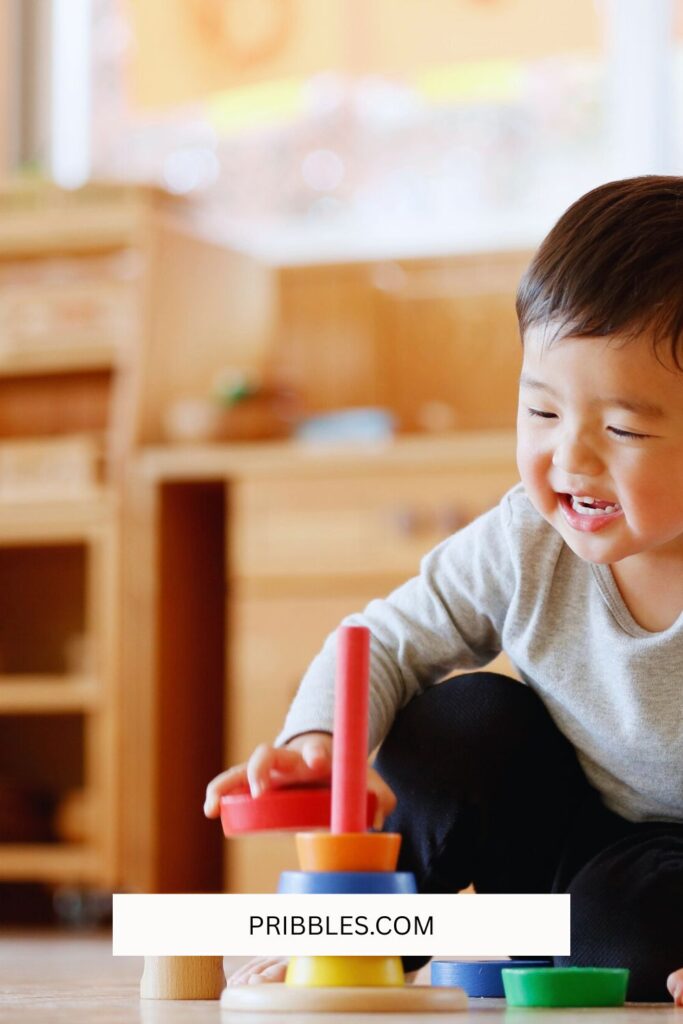
Final Thoughts
Creating a preschool homeschool schedule that flows isn’t about crafting a perfect plan. It’s about finding a rhythm that supports your child’s development while honoring your family’s lifestyle. When you anchor your days with routines, keep learning playful, prioritize outdoor time, and stay flexible, your homeschool days will naturally find their groove.
So grab your coffee (or tea), take a deep breath, and remember: you’ve got this.
